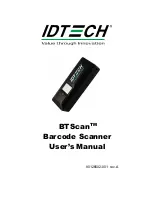
ii
TriCoder Quickstart
As powerful as the TriCoder is, its basic operation is quite simple. Many people
can use Program #0 or Program #1 to satisfy their data collection needs. This
Chapter helps you get started quickly using Program #0 or Program #1. It also
will refer you to the correct place if you want to customize or expand on
Program #1. We highly recommend going to Chapter 3; Non Portable Mode
and establishing communication between the TriCoder and the PC before you
continue with either of the tutorials. It is easier to establish communication with
one data item in the TriCoder rather than trying to do so during a massive batch
upload. The chapters in this section are:
•
Program #0 Tutorial
Uses the fixed program #0 to collect and upload data for a single
ITEM prompt to your computer. If you need a program that prompts
for an item number and then a quantity, go to the Program #1 Tutorial.
If Program #0 works for you, except that you have trouble with the
wedge upload, switch to USB or see Program #2. It is identical to
program #0 but allows timing delays to be inserted in the Upload
Prefix and Suffix. See Chapter 8;Creating a custom program for
information on the Upload Prefix and Suffix.
•
Program #1 Tutorial
Uses the editable program #1, which prompts for Item Number, then
Quantity. The tutorial includes collecting, reviewing, and uploading
data as well as providing outlines for different file formats and voice
messaging. Since Program #1 is editable, the tutorial also discusses
use of the following popular features:
−
Data Security
Restricting user to Data Collection mode or to data collection
in one program only.
−
Xtra Statement
Automatically enter a quantity of 1 without the user having to
input any data.
•
Non Portable Mode
Provides details on Non Portable use and establishes communication
between TriCoder and host computer through the USB port, keyboard
and serial port. Includes installation instructions for the Windows
TriCoder Utilities program
•
Uploading Data
Guides the user through the uploading of data through USB, the
keyboard and serial port for both tutorials described above.









































